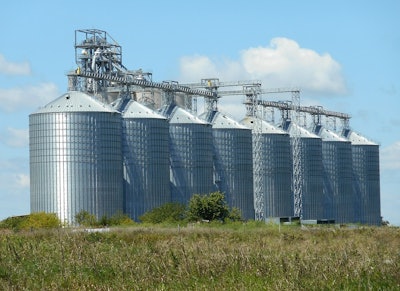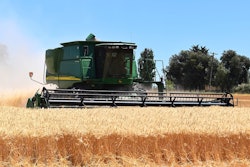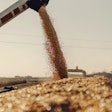
I remember hearing this phrase a time or two as a young person. If I’m honest with myself, I would have to admit there is a good chance that I unfortunately used this in a pejorative way. If I’m brutally honest with myself, I’ve defined it a time or two. Although, it has been used to express contempt or disapproval, it does have some practical application, especially for those of us in the grain storage business.
Cambridge dictionary defines waste of space as “a person or thing that is not useful or helpful.” In the grain storage business, it is our responsibility to make sure that our space is both useful and helpful. At the risk of being overly simplistic, space is our asset and it needs to be used to conveniently receive grain, carry inventory and provide bushels when the market calls for them. The goal is to make our space useful in these processes to capture opportunities the market affords us and ultimately pay our bills and then some.
The first opportunity is to lock in a favorable price for the farmer while establishing a favorable buy basis for the elevator. The second is to manage spread to provide income to carry a crop into the final opportunity which is to sell the crop at a favorable sell basis.
Unfortunately, when we do not manage our space well, we may be found guilty of wasting not only space but also opportunity. Let’s look at the opportunities space gives us, ways that we can end up wasting our space and finally how to avoid those pitfalls.
Opportunity #1: Buy basis
After years of managing an elevator and now helping grain businesses, I would conclude one of the toughest, time consuming yet rewarding jobs is buying grain. We may and should spend a lot of time on this endeavor, but it needs to be done with the understanding that our space and service have value.
Knowing the value is the foundation of establishing a buy basis. The surrounding markets will have a value as well. Your bid is a reflection of what you are bringing to your local market.
The pitfall would be to simply do what everyone else is doing, especially when you set drying rates, storage fees and the like. These fundamentally impact your buy basis and the value of your space.
Without properly aligned discounts you are inadvertently raising buy basis while lowering the value of your space. Others will do it. They will use gimmicks to own grain, and you will have to provide a higher value of service or be forced to follow along.
In order to avoid this, don’t give into the gimmicks. While it may create frustration to your short-term relationships, I believe it serves your long-term relationships best to be known as a consistent player in the local market. To do this, it is imperative you understand your value in the local market. Usually, backing out freight and handling in relation to the hungriest party gets you there. Do this and work hard to help your farmer capture profitable pricing opportunities. Anything less than this usually has a cost involved to you and the customer.
Opportunity #2: Spread management
Not only does the market provide producers with a tool to market their crop 17.5 hours a day, it also provides storage facilities a tool to capture spread opportunities. Spreads provide two main opportunities.
首先,他们给一个指示的需求of the market lays. If we’re watching, it tells us whether to hold grain or sell grain. The other opportunity is the chance to lock a market structure in that allows you to manage your space profitably. Managing these opportunities correctly can lead to maximizing your use of space and add to your margin.
I think the greatest pitfall associated with spreads is having an unhealthy appreciation for the opportunity. Speculating on spreads, locking them in with a back-to-back transaction or the idea they are too complicated can rob you of this opportunity.
虽然是一个季节性传播,设置them without the intent to use them is speculation and has as much risk as opportunity. Those who trade back-to-back unfortunately limit their spread income to whatever the spot market is. Those paralyzed because it all seems a bit too much lose opportunity to fear. These pitfalls rob us of the opportunity to manage spreads and bring outside dollars into our communities.
Avoid these pitfalls by having a grain flow plan that will express your spread needs for a crop year. Similar to the seasonality of grain pricing opportunities, spreads express themselves seasonally. If you have a plan to carry or need to buy grains for inputs, look for those opportunities to lock in structures that are favorable to your grain flow.
When you have a program that captures a favorable buy basis, locking in a profitable spread structure is a wonderful compliment and can pay a good portion of your overall margin. Regarding back-to-back trading, while it may be a safe way to offset price risk, it has limited income potential, as well as your ability to maintain your facility and certainly limits growth potential. Hedging your positions while managing spreads can add meaningful income to your operation.
Finally, the notion that spreads are complicated — I get it. We can make them complicated, but in and of themselves they are simple. Carry structure is telling you to carry grain and inversions tell you to be a seller of grain. These structures can be locked in when they reveal themselves. Don’t let this line of thinking paralyze you with fear. Dive in and get an understanding. They are worth getting to know.
Opportunity #3: Sell basis
Selling may be another undervalued opportunity. While I’m addressing it last — and many times it is the last step in this process — it doesn’t have to be.
The founder of our company, Don White, said “Selling is everything.” While the statement is rather hyperbolic, there is a lot of truth in it. One benefit he shared of being a seller of grain is how it forces you to be a better buyer of grain. Another benefit is it helps you be a ready seller of grain. Both create opportunities. It means you know what you have and what it is worth. Selling because you must is the worst time to sell. Know your value and you will know your triggers for selling grain.
I had a buyer that would occasionally call and see if there was anything I “needed to sell.” This made me chuckle internally. I would consider myself a ready seller but not a “needy” seller. I took from his question that he was looking for cheap grain all the while giving me the signal that he was the one who needed something. Otherwise, he did not call me.
Don’t get me wrong. I wasn’t looking to take advantage, but you better believe I had a number ready to give him that reflected the value of my space. I knew what I bought grain at. I knew what it cost to carry it to that point, and I had a handle of where basis should be. Opportunity would knock and I answered. Didn’t always get the sale, but I also did not give away the value of my space based on not knowing it.
The impact of not wasting space
You are in business to provide a service or good that benefits the customer while bringing you a favorable return. How well you manage your space has an impact on how much value you bring to your bottom line and ultimately to your community.
Let’s look at a couple ways to carry grain in a carry market and how we get paid. In one scenario, I can allow the producer to store grain in my elevator until it is priced. Unfortunately, it is usually at a lower price than could have been locked in prior to harvest.
Since I’m allowing him to use my space, I need to charge fees that reflect the opportunity I would have if I owned the grain.
In this scenario, I earn money from a member of my community in order to feed my family. The other scenario is to work hard to help the producer lock in profitable prices prior to harvest. Owning the grain at harvest gives me the opportunity to manage spreads to cover my cost of carry. When I do, I maximize the usefulness of my space while “Chicago” pays the bill.
I share this as an example of how we make sure our space is useful and helpful not only for our business but also for our community. By locking a good price for the farmer, managing spread opportunities, and selling to a market when it calls for it, grain businesses can bring needed dollars out of the market and into our communities. Space that is managed wisely maximizes profit and helps the community. Let’s not waste our space. ■
Dwayne Wilsonis a grain merchandising specialist with White Commercial Corporation. He works with both WCC’s sales and merchandising support teams to help grain elevators across North America grow. Dwayne resides in Covington, OH,
with his wife and three children. He can be reached at[email protected].





















